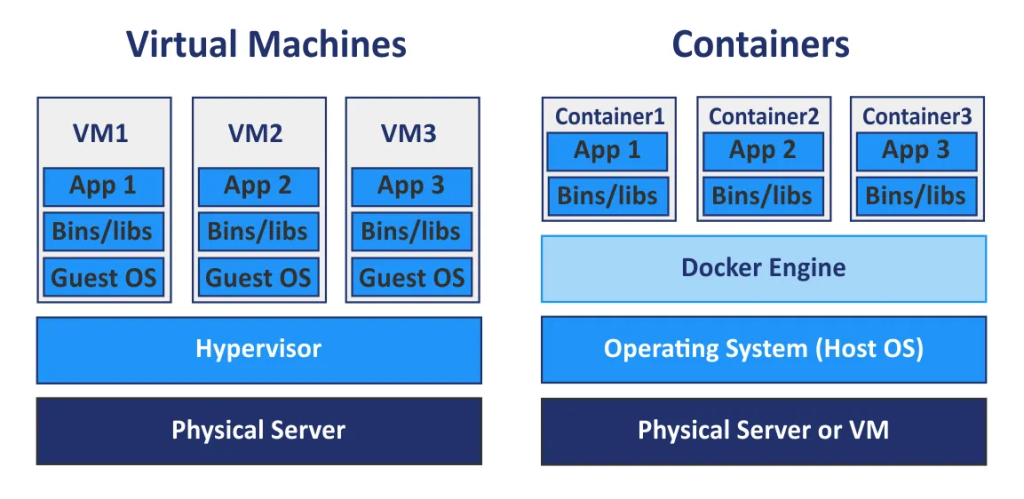
In 2024, both virtual machines (VMs) and containers continue to play important roles in the computing landscape, but with distinct strengths and evolving trends:
Virtual Machines (VMs):
- Strengths:
- Isolation: VMs offer strong isolation between applications and the host system, ensuring security and stability.
- Flexibility: VMs can run complete operating systems, allowing you to run virtually any software.
- Maturity: VMs are a well-established technology with many management tools and support options.
- Trends:
- Continued use for legacy applications: VMs remain the preferred choice for running legacy applications that require specific hardware or software configurations.
- Shift towards specialized VMs: We’ll see more focus on specialized VMs optimized for specific workloads like AI/ML or high-performance computing.
- Hybrid cloud deployments: VMs are increasingly used in hybrid cloud environments, where they coexist with containers in a coordinated manner.
Containers:
- Strengths:
- Efficiency: Containers share the host operating system, leading to lower resource consumption and faster startup times.
- Portability: Containers are easily portable across different environments, simplifying deployment and management.
- Microservices architecture: Containers are ideal for building and deploying microservices-based applications.
- Trends:
- Growing adoption: Containers are expected to see continued growth in adoption, especially for new cloud-native applications.
- Security focus: As container use grows, security becomes a top concern, driving innovation in container security tools and practices.
- Integration with Kubernetes: Kubernetes remains the dominant container orchestration platform, and we’ll see deeper integration with other tools and services.
Choosing the right technology depends on your specific needs:
- Use VMs for:
- Legacy applications requiring specific OS or hardware.
- Applications needing strong isolation and security.
- Complex workloads with diverse dependencies.
- Use containers for:
- Modern, cloud-native applications.
- Microservices-based architectures.
- Applications requiring fast deployment and portability.
Beyond VMs and containers:
- Serverless computing: This emerging technology eliminates server management, offering even higher agility but limited to specific use cases.
- Hybrid approaches: Combining VMs, containers, and serverless based on specific needs is becoming increasingly common.
The best approach often involves a mix of technologies depending on your specific requirements and priorities.
Latest posts by Rahul Singh (see all)
- Buy TikTok Followers: In the Sense of Advertising - May 25, 2024
- Understanding the Key Principles of PhoneTrackers - May 23, 2024
- Mutual of Omaha: Selection and Interview process, Questions/Answers - April 15, 2024

